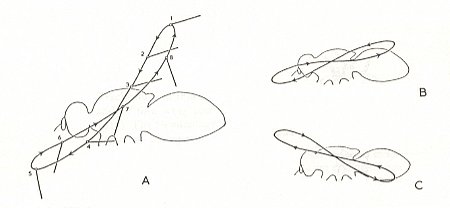When we are young, we classify everything into very black and white catagories. What is a bird? Orginally, our response was a tiny flying animal with feathers and wings. However, that description is astronomically incorrect. Birds do not have to be small. The largest flying bird, the Argentavis, (extinct as of 2009) has a wingspan of 24 feet. Birds don’t even need to fly. Take the penguin for example. Forever flightless but still called a bird. The hummingbird may seem like it fits a child’s idea of ‘bird’, but it’s actually more different from a bird than both the Argentavis and the penguin. The hummingbird resembles something between an insect and a bird.
The hummingbird has the amazing ability to hover in one place for up to 50 min, fly backwards, and upside-down. It can do these things because its body structure differs from other birds. One of the most important features is its wing structure. Most birds’ wings have a bend in them so they can reduce the wing’s surface area or fit through small spaces. The hummingbird, however, has wings that do not bend or fold in the middle but are straight out from the body. They, unlike other birds, use their upstroke to propel themselves forward with almost as much force as the down stroke. These differences are what make the hummingbird such a fast and agile flyer, like insects.
Although the hummingbird’s flight is similar to an insect’s flight, it’s not quite the same. When most birds fly, they create 100% of the lift on the downstroke and use the upstroke to ‘recover’. Insects create lift evenly on the upstroke and downstroke, with a 50/50 ratio. The hummingbird creates 75% of the lift on the downstroke and 25% on the upstroke. Not quite like an insect, but also not like a bird. The wing pattern of the hummingbird is more closely related to insects than other birds. Hummingbird’s flight pattern is almost horizontal and moves in a figure eight, just like an insect. Most birds flap their wings close to vertically in ovals, which makes it harder for them to hover like hummingbirds and insects do.
The hummingbird. It’s not an insect, that’s obvious. It flies like one and flaps like one, but it’s not a bug. It’s a bird, but because of its wing structure, flight pattern, and flapping pattern, it’s like no other bird. Children have no idea just how strange a bird a hummingbird is.
Works Cited:
Altshuler and Dudley, The Ecological and Evolutionary Interface of Hummingbird Flight Physiology.


One Comment
Lorena Barba posted on October 21, 2011 at 8:04 pm
It really is like no other bird. They are the only ones with robust hovering capabilities! Other birds and bats can hover for only a short time (without counting the ‘windhoverers’, of course, who are really flying at speed with respect to the air around them).